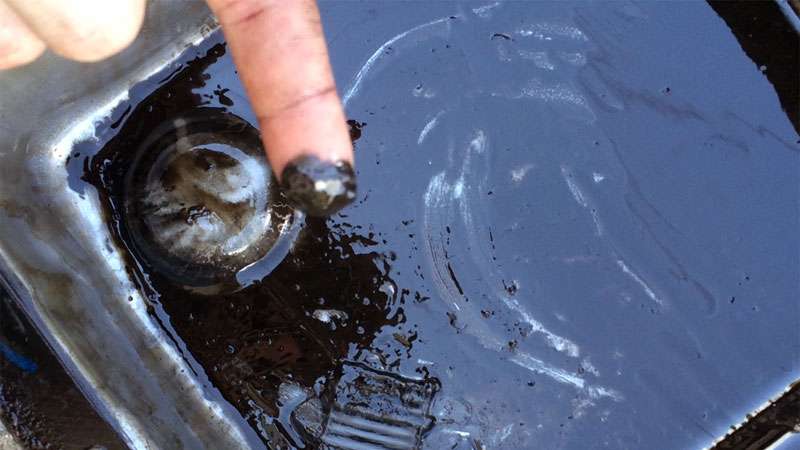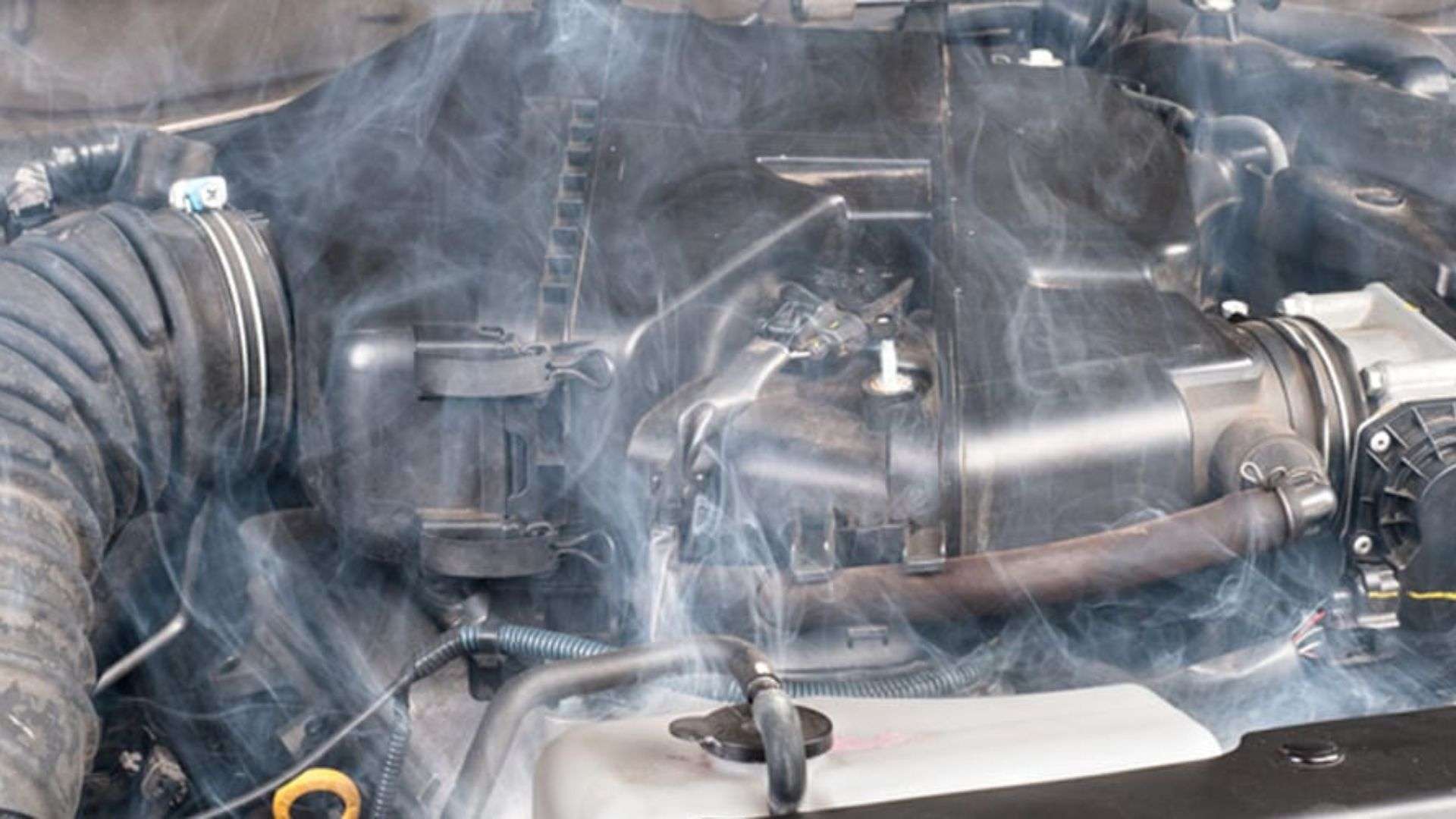Regarding vehicle maintenance, changing the transmission fluid is essential to ensure the smooth operation and longevity of your vehicle’s transmission system. Many car owners wonder whether “does Walmart change transmission fluid?” This blog post will explore the topic and provide all the information you need about changing your transmission fluid at Walmart.
Does Walmart Change Transmission Fluid?

No, Walmart does not change the transmission fluid.
While Walmart provides various automotive services and performs transmission fluid level checks, it does not offer transmission fluid changes.
This is primarily due to the potential risks involved. Suppose the transmission fluid is incorrect or the procedure is not performed correctly. In that case, it can cause damage to the vehicle. To avoid any liability, Walmart has chosen not to offer this service.
Additionally, Walmart processes a large number of vehicles each day, making it challenging to allocate the time and equipment necessary for transmission fluid changes.
However, Walmart does offer other fluid-changing services like oil changes. They also sell transmission fluid and the tools required for individuals to perform the fluid change themselves.
This allows customers to perform the task independently if they are knowledgeable and confident.
Read Also: Does Walmart Sell Sushi?
Can You Buy Transmission Fluid At Walmart?

Yes, you can buy transmission fluid at Walmart. Walmart offers a wide range of automotive products in their automotive department, including transmission fluid.
They carry various brands and types of transmission fluid to suit different vehicle requirements.
You can find it at Walmart for automatic or manual transmission fluid.
It is typically located in the automotive fluids section, along with other motor oils and lubricants.
You can purchase the transmission fluid you need for your vehicle in-store or online through Walmart’s website.
Why Does Transmission Fluid Need To Be Changed?
Transmission fluid needs to be changed periodically for several important reasons:
- Lubrication: Transmission fluid lubricates the moving parts within the transmission system, reducing friction and preventing excessive wear and tear.
- Heat Dissipation: The fluid helps to dissipate heat generated during operation, preventing the transmission from overheating and potential damage.
- Contaminant Removal: Over time, transmission fluid can accumulate contaminants such as dirt, debris, and metal particles. Changing the fluid removes these contaminants, ensuring smooth operation and preventing clogs or blockages.
- Fluid Condition: Transmission fluid can break down over time, losing its effectiveness and becoming less capable of performing its essential functions. Regular fluid changes help maintain the fluid’s quality, ensuring optimal performance.
Changing the transmission fluid at recommended intervals can prevent friction, overheating, and potential damage to the transmission system.
Adhering to the manufacturer’s guidelines is crucial to maintaining the longevity and efficiency of your vehicle’s transmission.
What Are Some Signs That My Transmission Fluid Needs To Be Changed?

Recognizing the signs that your transmission fluid needs to be changed is crucial for maintaining the health and performance of your vehicle’s transmission system.
Here are some additional details about the signs indicating a need for transmission fluid change:
1. Discolored Fluid

Transmission fluid should typically have a reddish or pinkish color. If you notice that the fluid appears dark, brown, or black, it is likely contaminated with dirt, debris, or worn-out particles.
Suppose the transmission fluid appears significantly darker than its original color. In that case, it strongly indicates that it has become oxidized and dirty.
This dark fluid often suggests the presence of sludge, which can impede proper lubrication and cooling within the transmission system.
In addition to a change in color, transmission fluid with a burnt smell clearly indicates that it has been subjected to excessive heat and may be ineffective in providing optimal lubrication.
The burnt odour can be caused by overheating, friction, or the breakdown of additives in the fluid.
As it ages, contaminants such as metal shavings, clutch material, and dirt can accumulate in the transmission fluid.
These contaminants can cause increased friction and wear on transmission components, potentially leading to more severe issues if not addressed promptly.
Monitoring the color and condition of your transmission fluid is crucial because clean and adequately functioning fluid is essential for smooth gear shifts, lubrication of moving parts, heat dissipation, and overall transmission performance.
Read Also: Can I Use a Walmart Gift Card for Gas?
2. Slipping Gears

Slipping gears, characterized by a sudden loss of power or delayed response when shifting, can indicate the need for a transmission fluid change.
Contaminated or insufficient fluid can cause inadequate hydraulic pressure, leading to gear slipping.
Changing the fluid restores pressure improves lubrication, and prevents further transmission damage.
If experiencing slipping gears, it’s important to check and change the fluid as needed and consult a professional for a proper diagnosis.
3. Rough Shifting

Rough shifting refers to a noticeable jerkiness or harshness during gear changes in an automatic transmission.
It can occur when the transmission fluid is old, degraded, or contaminated.
When the fluid loses effectiveness, it can result in insufficient lubrication and compromised hydraulic pressure, leading to rough shifting.
Any debris or contaminants can be removed by changing the transmission fluid, ensuring smoother gear transitions and improved overall performance.
If you experience rough shifting, it’s advisable to have the transmission fluid checked and changed to maintain the health and longevity of your transmission.
Consulting a professional can help identify and address any underlying issues contributing to the rough shifting.
4. Transmission Overheating

Overheating can cause the transmission fluid to degrade and lose its ability to provide adequate lubrication and cooling.
Continuous overheating can lead to significant damage to the transmission system.
Suppose you notice signs of overheating, such as a burning smell, engine temperature increase, or dashboard warning lights. In that case, it’s essential to address the issue promptly.
Changing the fluid helps maintain proper levels and prevents excessive heat buildup, protecting the transmission from overheating-related issues.
Monitoring temperature, avoiding extreme conditions, and timely fluid changes are essential for preventing transmission overheating.
5. Leaks

Transmission fluid leaks can occur due to worn seals, gaskets, or damaged transmission components.
These leaks can result in low fluid levels, which can cause improper lubrication and lead to transmission problems.
Signs of a transmission fluid leak include puddles of fluid under the vehicle, low fluid levels, and transmission slipping or shifting issues.
It is essential to address leaks promptly to prevent further damage and maintain the integrity of the transmission system.
Regularly checking for leaks and addressing them helps ensure the longevity and proper functioning of the transmission.
6. Unusual Noises
Unusual noises from the transmission can indicate that the transmission fluid needs to be changed.
These noises can include grinding, whining, or clunking during gear shifts or while the vehicle is in motion.
Such noises may indicate that the transmission fluid has deteriorated or become contaminated, increasing friction and wear on transmission components.
It is essential to address these unusual noises promptly, as they can indicate underlying transmission issues.
Changing the transmission fluid can help eliminate the contaminants causing the noise and restore proper lubrication, reducing the risk of further damage to the transmission.
What Does a Transmission Fluid Change Involve?
A transmission fluid change involves draining the old transmission fluid from the system and replacing it with fresh fluid. Here’s an overview of the typical steps involved:
- Inspection: The technician checks the transmission fluid and system for damage or leaks.
- Fluid Drain: Old fluid is drained to remove contaminants.
- Filter Replacement: Replace the filter if necessary.
- Fluid Refill: Fresh fluid meeting the manufacturer’s specs are added.
- Road Test: Test transmission functionality post-fluid change.
Note: Some vehicles may require a transmission flush instead. Consult Walmart technician for appropriate service.
Does Walmart Change Oil?
Yes, Walmart does change oil. They have automotive service centers where trained technicians use quality motor oil and oil filters to change the oil.
Walmart provides various oil options for different vehicle requirements, including conventional, synthetic blends, and full synthetic oils.
They also offer oil filter replacement, fluid top-ups, and a primary vehicle inspection.
Does Walmart Change Car Batteries?

Yes, Walmart does change car batteries. They have automotive service centers where trained technicians can replace your car’s battery.
Walmart offers a selection of car batteries from reputable brands to ensure reliable performance.
The technicians will assess your vehicle’s battery needs, remove the old battery, and install a new one.
It’s advisable to check with your local Walmart store or their website for specific pricing and availability of car battery replacement services.